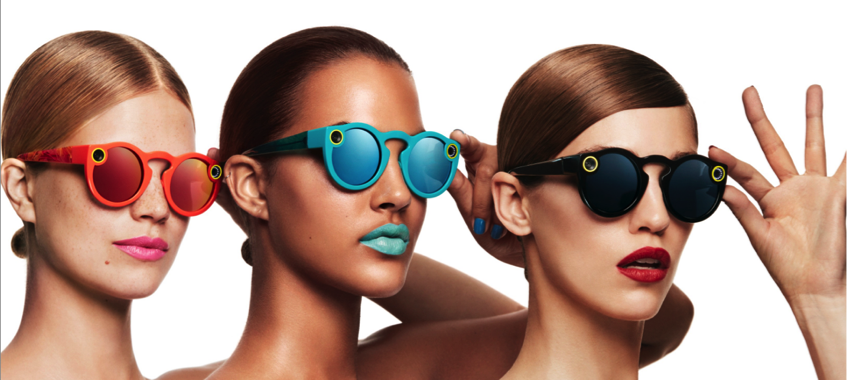 “On TV And Video” is a column exploring opportunities and challenges in programmatic TV and video.
“On TV And Video” is a column exploring opportunities and challenges in programmatic TV and video.
Today’s column is written by Danielle Levitas, senior vice president of research and analysis at App Annie.
Snapchat has entered the hardware space with last month’s launch of Spectacles, its camera-enabled glasses.
The premise is simple: Users tap the corner of the sunglass frame to take a 10-second video, which will then sync with Snapchat on iOS and Android.
With that, the company shed the “chat” part of its name and rebranded as Snap Inc. The company went so far as to declare within its message statement that it is now a camera company.
But proclaiming itself a camera company doesn’t mean that Snap is pivoting to a hardware-driven revenue model. Rather, the launch of Spectacles is intended to help Snap Inc. retain and bolster its dominant revenue model based on advertising. Spectacles also increase Snapchat’s stickiness with its most valuable and engaged users, as the new device works exclusively with the app.
The move represents Snap’s latest move on the path to business maturity and an eventual IPO. In recent months, the brand has invested serious effort in moving beyond independent influencers to court NBCUniversal to produce original content for Snapchat and introduce digital ad targeting that brings it closer to parity with other ad-supported social platforms.

Launching this fall, Spectacles initially will be available in coral, teal or black.
Driving Snap’s Ad Business
The Snap app now has 150 million daily active users, with 60 million coming from the United States and Canada, according to Chief Strategy Officer Imran Khan. The app has unique strengths for advertising, Khan said, including customizable lenses and full-screen vertical video ad formats. These play with sound once clicked, and about two-thirds are viewed with sound turned on. This compares to Facebook, where advertiser videos autoplay with sound turned off by default and are competing for user attention among personal updates.
The launch of Specs will give Snapchat advertisers a new way to think about video formats. Specs’ lenses contain a video camera with a 115-degree angle that shoots circular video, which could give brands the best of both worlds in terms of vertically and horizontally framed video.
This should also lend itself to a more immersive experience than most video ads today. It represents yet another step of alternate video formats – like 360-degree video, which YouTube and Facebook both support – being mainstreamed for consumer and advertiser use.
Given the network effect the app has and the variety of video formats, Snap can expand its Discover stories to its hardware – offering brands mobile ad opportunities that are already incredibly immersive by nature.
Further, if Snap aims to transform its Discover platform to include broader programming, like reality shows, the advertising potential may end up competing with television budgets. This would help tackle television’s largest gap: access to hypergranular, user-level data.
Outfitting Its Core User Base?
Specs aren’t for everyone. But for $129 and a design similar to Ray-Bans, which retail around $150, it isn’t difficult to imagine a world where the new gadget catches on with younger, fashion-conscious Snapchat users with disposable income. That’s an advertiser’s dream.
For the foreseeable future, video taken with Specs can only be fed directly to Snapchat. Even if the Spectacles user base is relatively small, with the right owners – namely pop icons and young content creators – the Snapchat app will benefit from the network effect, driving more content viewing and engagement from non-Spectacles users. This then offers more opportunities for advertisers to not only reach an increasingly growing user base through Specs, but a loyal audience that is hyperengaged and location-specific through the hardware and the app.
Can Spectacles Shatter The ‘Glass’ Ceiling?
Recent media coverage has focused on whether Spectacles will succeed in a world that wasn’t ready for Google Glass. We need to understand that the two are fundamentally different products. Spectacles are camera-enabled sunglasses that capture video intended for upload to the Snapchat app. Google Glass was a computing device, complete with a viewable display and support of third-party apps.
Eyewear wearables haven’t caught on with consumers (yet). Specs’ simplicity and affordable price tag put the sunglasses in a position to catch on with Snapchat’s core audience.
Snapchat has popularized several features over the years that have gone on to be adopted by other apps, such as disappearing media and messages, photo filters and stickers and Stories, to name a few. Given its track record, it has the potential to mainstream circular videos, which could have an effect on OEMs and networks such as Facebook and Twitter.
So while you or your immediate friends may never buy a pair of Spectacles, there’s little doubt that the impact from Snapchat’s users will draw more advertising dollars.
Follow App Annie (@appannie) and AdExchanger (@adexchanger) on Twitter.












